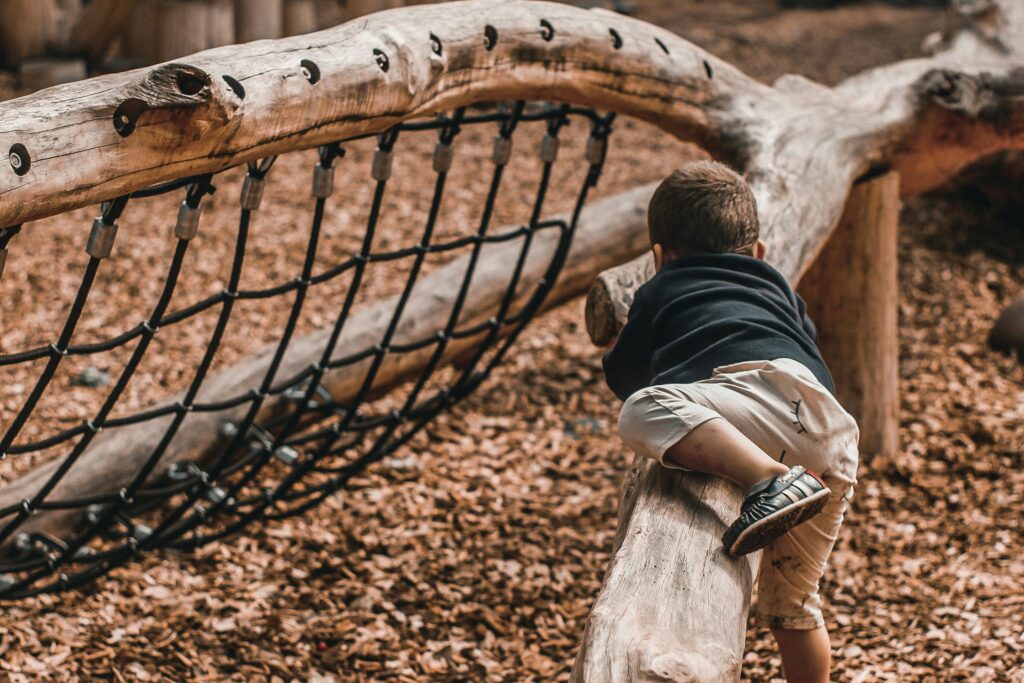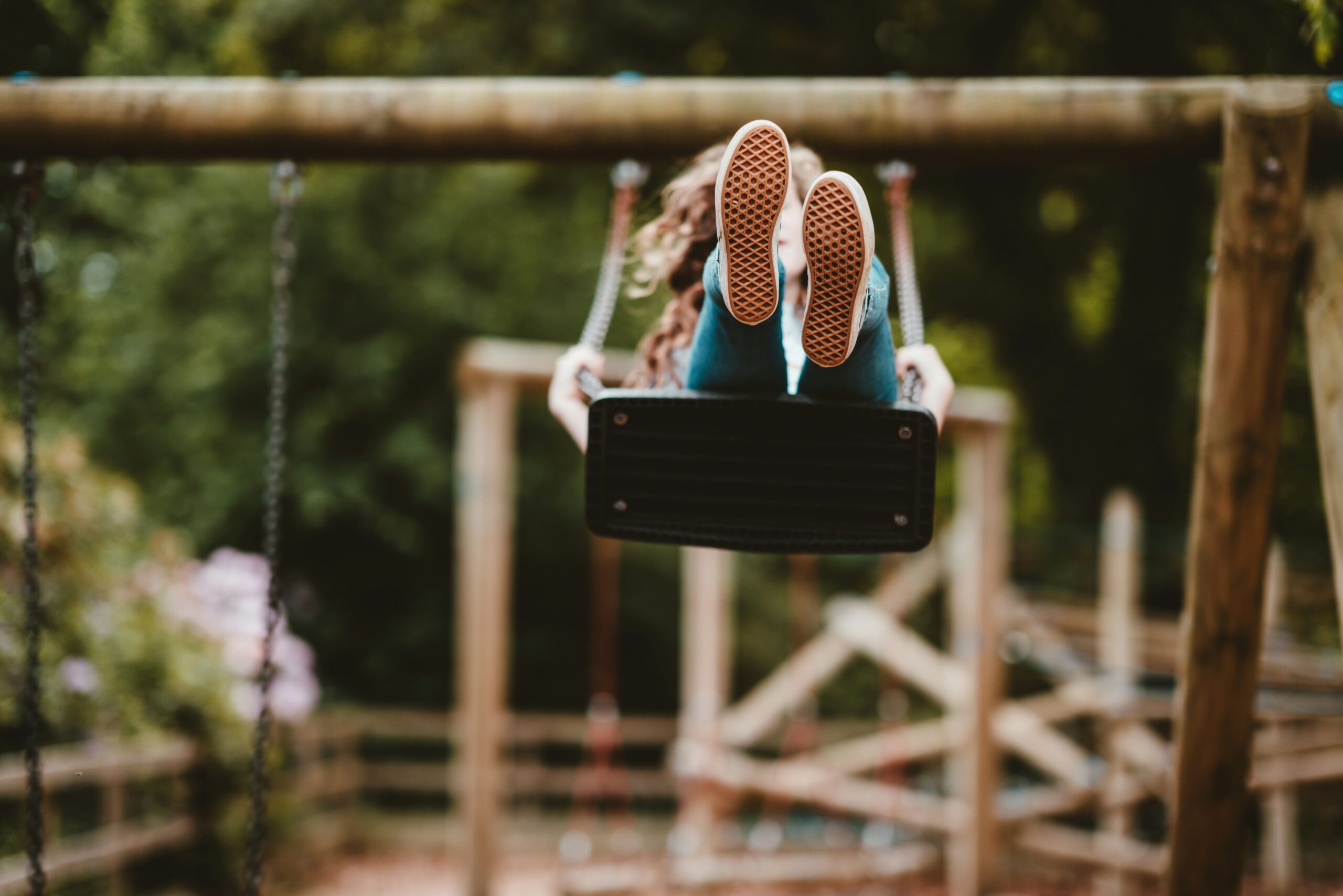
Children have the right to play. It’s protected under the UN Convention on the Rights of the Child – and for good reason. Play fuels imagination, builds coordination, and shapes emotional and social growth. These are benefits that are enhanced when children play outside. However, in many modern cities, play is confined to fenced-off or small patches on concrete between apartment blocks. Many cities are designed for productivity rather than childhood, which leave little room for discovery. What would it look like if we designed them differently?
The environment influences how children play
Children today are spending more time indoors than ever before. Across the world, screen time has replaced outdoor exploration as one of the main forms of play. Research shows that children now spend an average of 4–7 minutes a day in unstructured outdoor play, compared with over 7 hours a day engaged with screens and digital media.

The spaces available to children determine how they play. Those who live by the sea might spend their afternoons on the beach; children growing up near forests explore trails and trees. In cities, parks and playgrounds often provide the only chance to experience open air, movement, and a touch of nature.
However, access to green space is far from equal. An OECD comparison of six countries found stark disparities: while some cities have parks within a short walk for most residents, others leave entire neighbourhoods without nearby greenery. Even when parks exist, their design shapes the kind of play that happens there.
Research shows that children are more physically active in spaces with vegetation, water, and varied terrain than on bare concrete or uniform playgrounds. Parks that invite exploration and creativity through trees, natural surfaces, or flexible play areas tend to keep children more engaged and active.
As the climate warms, these designs matter even more. Days when temperatures exceed 35°C constitute extreme heat, and some pediatric specialists, such as Dr Ahmad Bailony at Sharp Chula Vista Medical Center, recommend limiting outdoor play to 30 minutes or less without a break in these conditions. In some countries and cities that level of heat is a regular occurrence. Creating shaded spaces, adding water features, and using vegetation to cool the air can extend the hours when children can play safely and make parks more comfortable for everyone.
Nature, health, and childhood development
Several health benefits have been connected to children playing outside including sun exposure for better vitamin D which supports bone development, increased fitness levels and lower risk of obesity, and stronger immune systems. In addition, outside play helps to develop stronger problem-solving skills and creativity. A review by the American Academy of Pediatrics found that exposure to green space near the child’s home, school or for activity in green settings is strongly associated with physical activity, cognition, behavioural and mental health outcomes.

Natural settings encourage unstructured play, where sticks become swords, stones become castles, and imaginations can run wild. Socially, parks offer neutral ground where children from different backgrounds mix and learn to cooperate. These are experiences that build empathy and communication.
Contact with nature during childhood also lays the foundation for environmental awareness. When children grow up surrounded by trees, insects, birds are more likely to care for them as adults. This connection is an essential investment in the next generation’s relationship with the planet.
Accessibility and ensuring all children can play
Access to parks and outdoor play remains uneven worldwide. Around the world, proximity to parks varies widely not just between cities, but between neighbourhoods. In many Latin American cities, central districts are ringed with well-kept green spaces while neighbourhoods on the outskirts have none.
Some cities are trying to close the gap. Bogotá has transformed underused plots into “pocket parks” to bring greenery closer to families. Singapore’s Park Connector Network links neighbourhoods through shaded walking and cycling paths. And in Melbourne, the 20-minute neighbourhood strategy ensures most residents can reach parks and essential services within a short walk.
Accessibility, however, isn’t just about distance. Parks must be safe, inclusive and welcoming. Designing parks with ramps, wide paths, shaded seating, and toilets means they become true community spaces.
Designing for discovery
If access is the foundation, design is what brings parks to life. The best children’s spaces are those that invite interaction. For example, urban artist and designer Jeppe Hein has created interactive urban works that bring playful, sculptural, natural elements into the city landscape.
Varied terrain and vegetation such as open lawns, trees, water bodies and natural ground materials encourage exploration and imagination. Play areas should be equipped with equipment for a range of ages that will challenge children, ideally including adventurous elements that allow children to climb, balance, build and interact, supporting gross motor skills and risk-taking under safe conditions.
Nature-play zones such as playscapes with logs, stones, sand, water, vegetation support unstructured play, creativity and connection to nature. In one survey, 88% of respondents rated a natural playscape as better than typical play areas for promoting nature-connection, and 69% for imaginary play and reflection.
Incorporating plant biodiversity, informal play opportunities, natural surfaces, water features, and opportunities to interact with the natural world (bugs, plants, trees) help children develop awareness of nature and ecological thinking. One study mentioned that children’s outdoor experiences are linked to moral attitudes towards nature.
In cities facing hotter climates and heavier rainfall, planning can make parks more resilient. Trees provide cooling shade; permeable surfaces absorb stormwater; vegetation filters air pollutants. Parks should allow caregivers to stay comfortably, observe children, relax and socialise.
A place for play in the city of the future
Parks are not just amenities, they are living parts of a city’s system. When designed with nature in mind, they become biophilic spaces that support both human and ecological wellbeing. Trees, shade, and natural materials invite movement and imagination while regulating temperature, filtering air, and absorbing water.
For children, these environments are more than playgrounds. They are classrooms of experience, places to test boundaries, notice patterns in nature, and build a sense of belonging to the world around them. For adults, they are reminders of balance and continuity.
Designing cities with play and nature at their core is not an aesthetic choice; it is how we raise healthier, more attentive generations who understand their connection to life itself.
Nature as Teacher: Designing Cities That Help Children Learn and Play
Children today grow up in cities built for efficiency, not exploration. Across the world, screen time replaces outdoor play, and access to green spaces remains deeply unequal. Yet research shows that contact with nature is vital for physical health, emotional development, and social learning. Parks with trees, shade, and natural terrain keep children active longer, help them cope with heat, and nurture empathy for the environment. Reimagining urban space through greenery is not just about leisure; it’s an investment in public health, equity, and the next generation’s relationship with the planet.